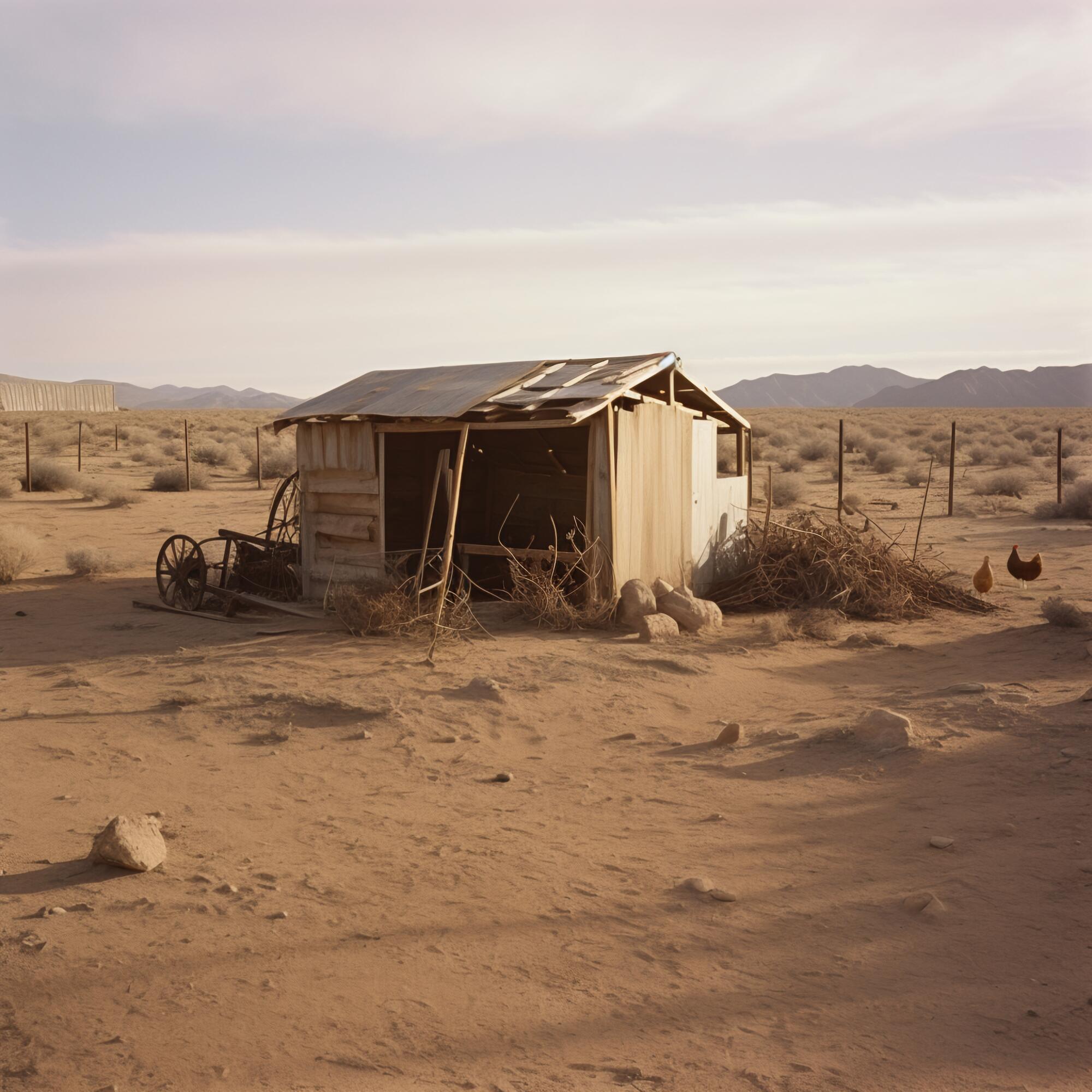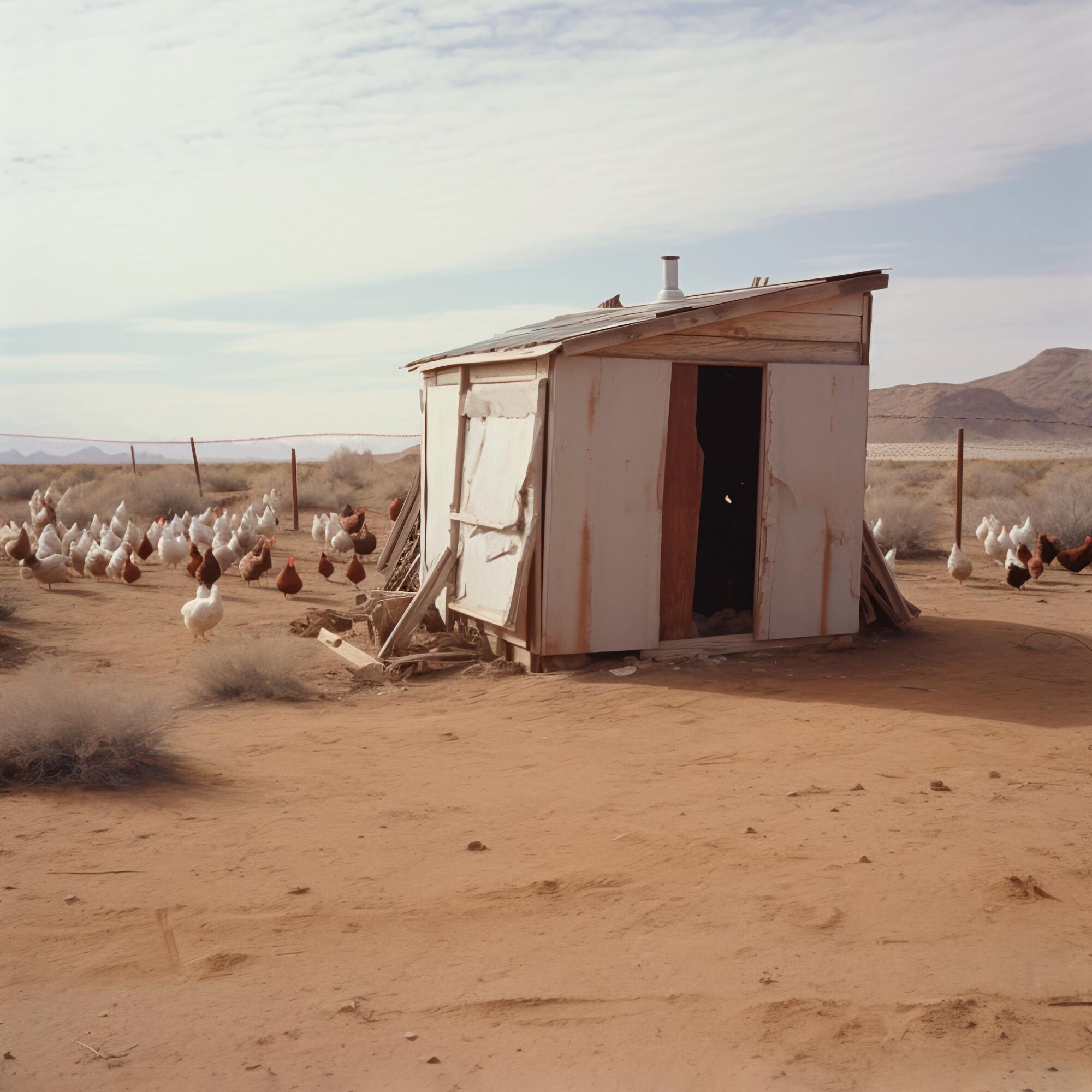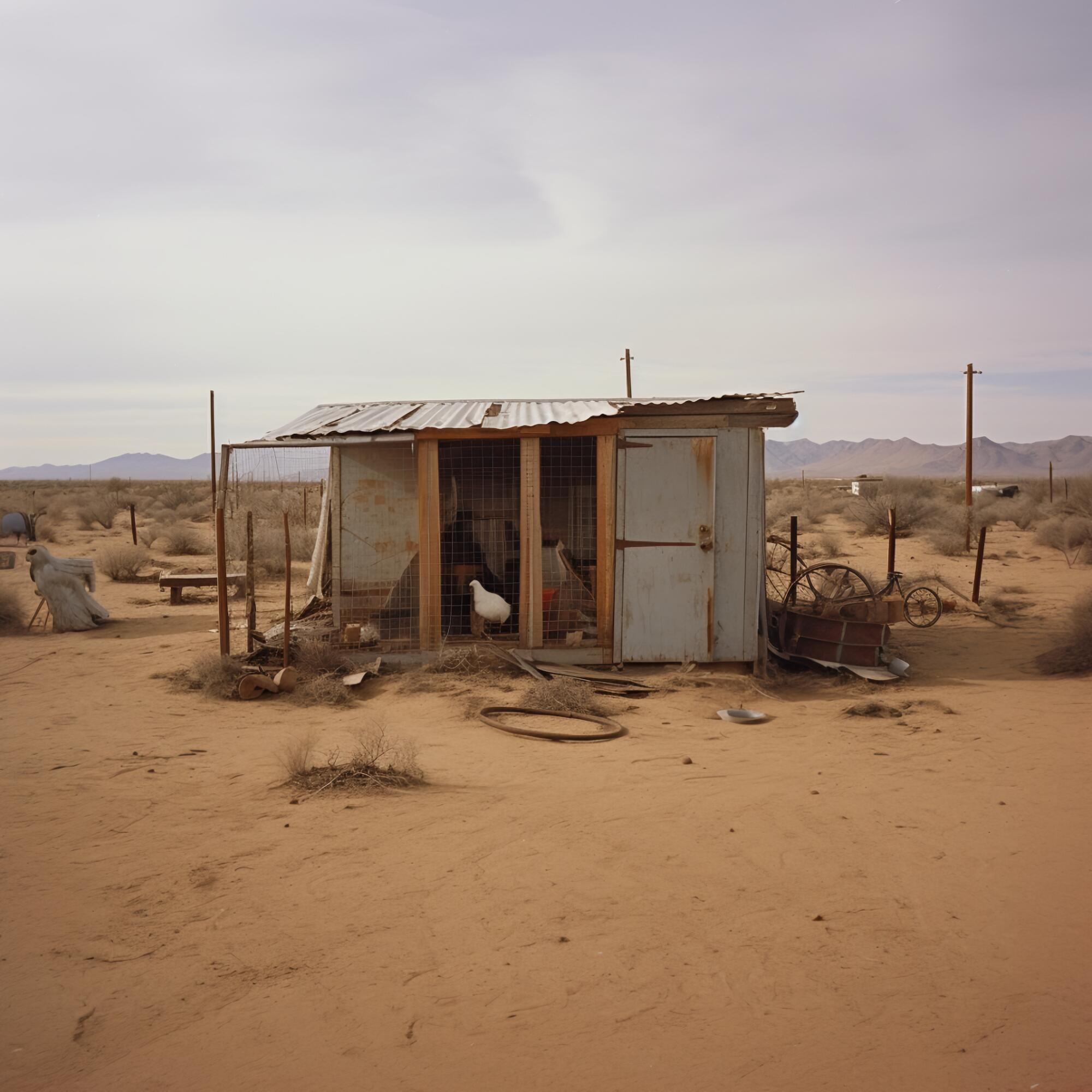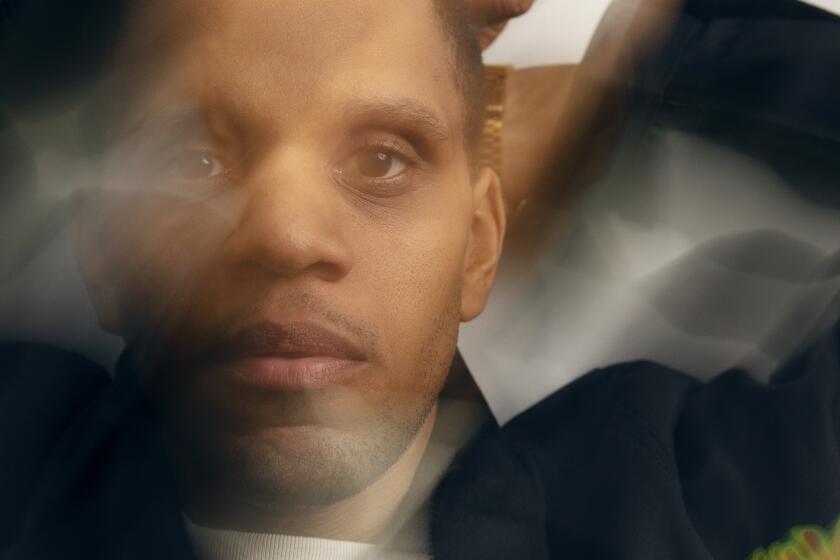- Share via

I’ve been doing this ongoing, multitiered project about Octavia E. Butler. Part of it is exploring events from her novels, but a lot of it is exploring her personal life and the overlaps with my own lived experience in Southern California. It began from knowing that she grew up in Pasadena, where I also grew up, and that we also went to the same high school. It got me thinking about the parallels in the things we saw and grew up around, particularly the presence of rocket science in Pasadena and the large science-fiction community in Los Angeles. Also, her family migrated from the South to California, which is part of a broader migration of Black Americans from the South to the West, which is less commonly discussed. Realizing there were some parallels in her family’s migration and my own family’s, it made me think about how all those things were playing a role in what she was writing and her relationship to Southern California, and particularly Los Angeles and Pasadena.
I’ve been really getting deep into the research of Octavia E. Butler’s life and visiting her archive at the Huntington Library. She talks about her grandmother Estella Butler having some land in Apple Valley, near Victorville, after she moved from the South to California in the 1930s, and there was a chicken farm. The way Butler talks about it, she remembers it burning down when she was really small and being carried out at night from this burning place. I think that’s partly why fire is such a trope in many of her novels — it’s a formative event or a transitional moment in a lot of the stories that she tells. I was really interested in this recurring event of fire being related to a personal experience of hers. I got to thinking about the chicken coop because I imagine her grandmother and her mother moving to California, trying to make their way in this new place. Butler’s mother worked for a long time as a maid in wealthy white people’s homes. I was thinking about Butler’s grandmother moving, having this chicken farm, and then her granddaughter becoming a well-known author and just that progression of trying to make one’s way in a place. For me, the chicken coop was a symbolic architectural form that represented migration and place-making for them.
An exhibition at REDCAT is built on Octavia E. Butler’s “Parable of the Sower.” Its creator, American Artist, talks with Tananarive Due.
It’s interesting that there’s no visual record of the chicken coop; there are no photos of it. I took a trip out to the area in Apple Valley. I’ve been working for a while with Ayana Jamieson, who’s the founder of the Octavia E. Butler Legacy Network — she’s been a thought partner for me throughout this project, and she told me where in the desert this place probably was. I took some photos of the land. There are some ruins there from some homes that could be part of the house that they lived in or may not be, we don’t really know. I didn’t really have a visual reference for what the farm looked like, and so going there was my first attempt at trying to find some trace of the place.

I used different ways to imagine what the coop might have looked like around the time that it burned down, probably in the early ’50s. I used Midjourney, which is an AI tool where you write prompts, and you can include reference images. I used reference images that I took when I visited the land in Apple Valley and images of other chicken coops that I’ve been looking at. Using that and a prompt that I came up with, I came out with these images that maybe resemble what a chicken coop of that moment would have looked like.
Octavia E. Butler’s work speaks a lot to me, not necessarily of the end of the world but of the future of the world and portrays it in a way that’s pretty bleak. She describes a lot of her writing as cautionary tales — what could happen if we don’t change our ways — particularly the “Parable of the Sower” series. Even though in her novels the world continues to go on for quite a while, it’s not a place that we want to live in. A lot of her themes reflect what’s going on now and has been going on for a long time, such as right-wing, Christian conservativism, the forced removal of children, putting people into slavery, and the race or impulse to go “to the stars” or colonize Mars.
Los Angeles as a place is very prone to science-fiction thinking. The mythology of it as an aspirational place that has so much potential, with beautiful land, and as a site of imagining a perfect city are all baked into the history of Los Angeles. I think that translates into a lot of the writing that has come out of Los Angeles. At the same time, when thinking about this concept of the end of the world, it’s not a totalizing event, it’s more of a spectrum of things that people experience. You could think of Butler’s family’s migration as a response to the world that they knew being over — escaping racial terror in the South and trying to move somewhere new, where they could have a new life and have a new source of labor. That’s sort of like the world ending as well. You could think of this idea of end of the world as happening in multiple moments and an ongoing thing that is being contended with, by her family and by all of us.

American Artist makes thought experiments that mine the history of technology, race and knowledge production, beginning with their legal name change in 2013. Artist, born in Pasadena, now lives and works in New York.







